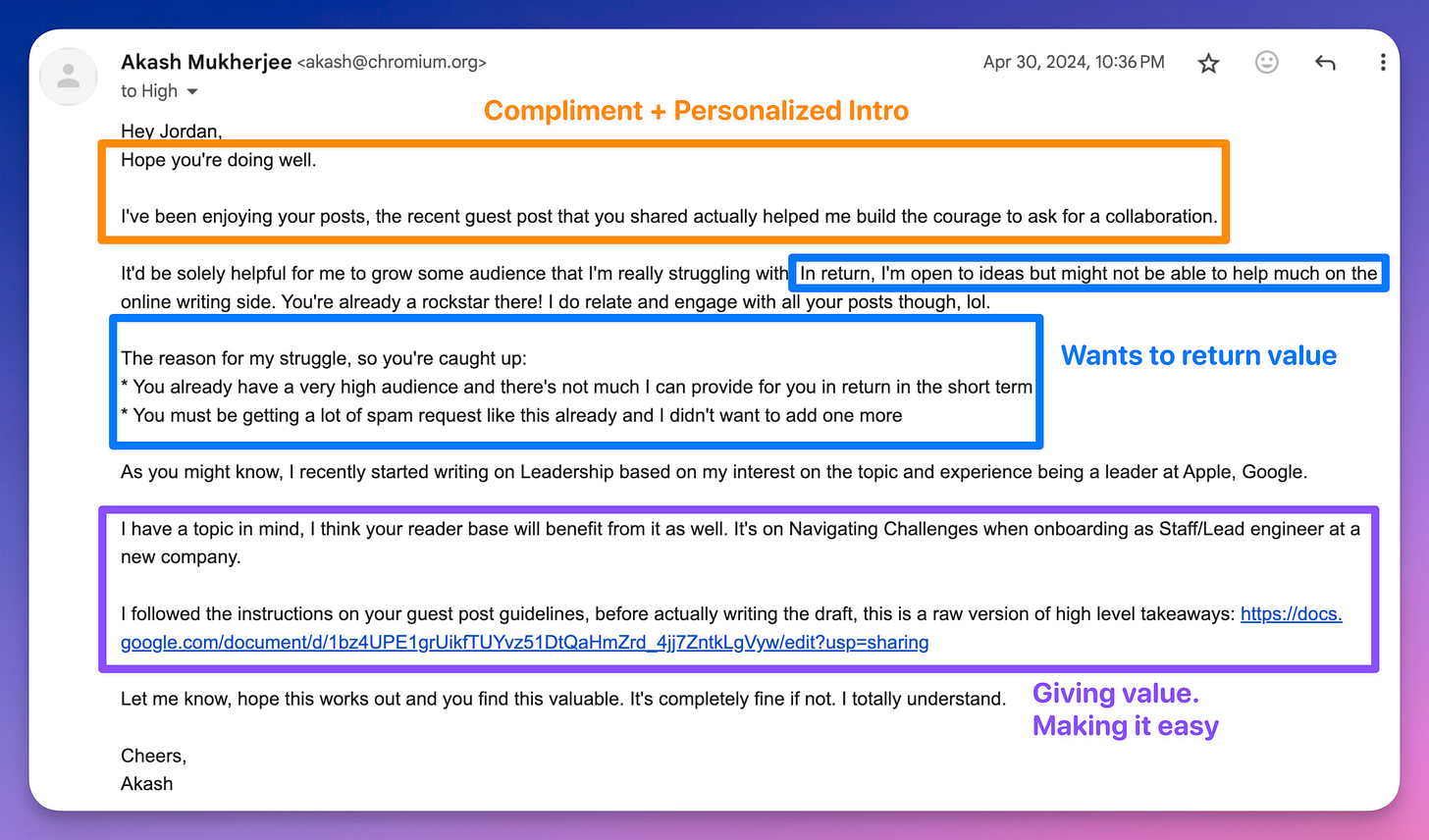What an actual Staff and Senior Engineer collaboration looks like
Senior+ communication strategies with real-world examples
Working in tech and writing a newsletter is hard—but not for the reason you think.
One of the toughest parts about being a writer and engineer is how much I wish I could share with you.
I want to show you my interactions, conversations, failures, and what you and I can learn from them—but for obvious privacy reasons, I can’t.
But today, I have the next best thing.
Last week, I shared a collaboration post between myself and Akash Mukherjee , Staff Engineer at Apple.
Today, I’m showing you a behind-the-scenes look at our collaboration, with plenty of examples and screenshots.
You’ll learn the tricks that Senior+ Engineers use to build trust, respect, and influence and how you can apply them at work.
Welcome, fellow High Growth Engineer! Each week, I send an article on Sunday to all subscribers providing concise, actionable advice to grow faster in your career.
Every other week, paid subscribers get exclusive access to the full article and TLDR. Free subscribers will have access to about half of the article.
I’d love for you to join the 450+ paid subscribers and access the full article + tons of other benefits. Use the button below to join!
⭐️ Main takeaways
How Senior+ engineers collaborate
Practical networking tips with examples
Tricks that Senior+ Engineers use to gain trust and influence direction
0) Set communication norms
Our strong collaboration started before Akash and I began chatting.
I wrote guest post guidelines to ensure anyone who reaches out knows what to expect when collaborating with me.
For reference, here are the Phase 1 guidelines:
How to apply this in your work: Establish communication norms when working with new people.
I like to ask, “What’s your communication style? Do you like to use Slack, huddles, Zoom? Prefer quick pings back and forth or a daily sync where we group items to chat about?”
Another thing you can do is write a “Guide to me” doc that shares a bit about you, your background, and how you prefer to communicate and share feedback.
1) Give value
Akash used those guidelines I created to his advantage when he contacted me.
Check out Akash’s first message:
You’ll notice a few things:
He leads with a compliment and personalized intro (in orange)
He shows he wants to provide value in return (in blue).
He made it easy for me by following the guidelines I outlined and linking to a short draft that I can preview (in purple).
Together, these gave a 5-star first impression, which excited me to work with him.
How to apply this to your work: Send a personalized message when meeting new people. Give value by addressing the other person’s top-of-mind priorities.
2) Respond quickly
Even for emails, Akash always responded in less than 30 minutes.
You can see how quick Akash is to respond. He sets the bar for communication.
But this isn’t a hard rule. We discussed how it can also be harmful.
My messages are in the blue:
Respond quickly, but don’t let it hurt your work. In this case, it was in Akash’s benefit to respond fast, but that won’t always be the case.
How to apply this to your work: Respond quickly based on impact. I respond fast when it means unblocking a teammate, moving forward on impactful work, or setting the bar with cross-functional partners.
3) Be respectful of time
As we moved to the “grammatical feedback” phase, I told Akash I planned to use Grammarly and Hemingway to provide more feedback.
Jordan (11:25): … Do you have the grammarly extension installed? If not, I think it will help correct some things without me.
I usually put the article in Hemingway first then Grammarly, but I have Grammarly paid so it gives additional suggestions. You don't need to, just sharing some of the tricks I use.
Anyway, let me know when you are good for round 2 and I can take another pass on grammar, brevity, etc.
Akash (11:41): … I don't have Grammarly paid, but I will get it past the regular grammarly and ping you on this thread. I want to be respectful of your time.
(30 minutes later this happened…)





